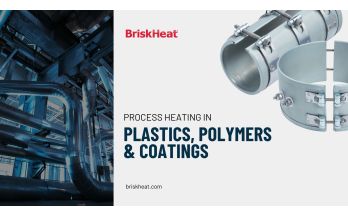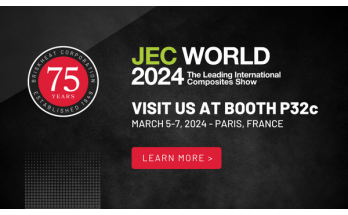As a prelude, BriskHeat’s Senior Vice President of Engineering and Semiconductor OEMs, Nick McNamara and Applications Engineering Manager, Dan Cudoc discuss what they are hearing from customers concerning current trends in semiconductor manufacturing.
We hear there are still chip shortages. Yet equipment sales for semiconductor manufacturing are down. What’s happening?
Nick: Currently, there is a shortage of less sophisticated chips. These chips are typically 65 nm line width or larger. Oh, and demand is roughly 60% of normal.
These are typically used in the automotive industry or for IoT (internet of things) devices. Both are experiencing growth, resulting in a higher demand. Conversely, the more advanced chips (narrower line width in the 3 - 5 nm) are currently not in high demand.
As the semiconductor industry is in a downturn, there is an oversupply of smaller, more sophisticated integrated circuits and high-end memory chips.
What is the future of developing more sophisticated chips?
Nick: As we are all aware, technological advances are happening at light speed. Many will demand the more sophisticated chips. Yes, the lower demand has directly impacted production and lowered the volumes. Nonetheless, companies such as TSMC and Intel are in expansion mode in preparation for upcoming increased demand.
What are customers asking for in preparation for manufacturing newer, more sophisticated, and narrower chips?
Nick: These chips will be utilizing different and more temperature sensitive gases to achieve the required (e.g., narrower) outcomes. These gases will require higher temperatures and more complex flow paths.
When the gas enters the chamber, precise, and consistent temperature control is critical. Vapor deposition is a complex operation. It occurs within the chamber and requires higher temperatures. Our custom cloth heating jackets and LYNX® temperature control systems are a combo configured to handle such production challenges.
BriskHeat is exhibiting at the upcoming SEMICON West 2023. Is BriskHeat introducing any new products?
Dan: BriskHeat will be introducing three (3) new LYNX temperature controller options. Each will have the ability to seamlessly control temperature for different tools/equipment. A tool/equipment set-up can be at a multiple locations or environments within a fab. The new units utilize a single communications protocol and HMI solution.
For example, the new LYNX controllers can operate simultaneously within a cleanroom, as well as the sub fab interchangeably. Then, communicate back to the customers’ central monitoring and facility control systems.
The LYNX NXT is a smaller and more compact version of the original LYNX temperature controller. In addition, it doesn’t require a separate docking station. The connectors for powering the heater snap right into the module. This change reduced the overall size. Additionally, there is also an increase in the ampacity and improved ingress protection.
LYNX OEM is a four-zone controller block which includes four (4) LYNX control zones. This is contained within a small, compact unit. This provides customers the ability to remotely mount their temperature controls. Perhaps the biggest benefit is no longer requiring the controllers to be mounted on each individual cloth heating jacket. Installations where space is limited (e.g., case with a tool), LYNX OEM can be mounted directly on a panel or backplate away from the heater. The cable can then be run direct to each jacket. The LYNX OEM centralizes a controller's layout to allow for easy status recognition and monitoring capabilities at the point of use.
Additionally, the LYNX OEM now features an alarm latching feature. This will allow a customer to meet Semi S2 overtemperature protection standards when the use of a typical manual reset thermostat solution is prohibitive.
LYNX Din Rail is the most significant addition to the LYNX control platform. LYNX Din Rail allows customers to control larger heater zones, with >7 amps/zone. This was accomplished by introducing the ability to control a secondary, external Solid-State Relays (SSR) vs. the traditional on-board current controlling device (located within the LYNX modules).
The LYNX Din Rail will seamlessly integrate into the LYNX Operator Interface (OI). It can also work/communicate with other LYNX modules, including the LYNX OEM and LYNX NXT. All under a single HMI or temperature control ecosystem.
LYNX Din Rail can be incorporated into BriskHeat Multi-point Digital PID Temperature Controller (MPC2). This provides a near limitless ability to provide power distribution, temperature control, monitoring, and facility safety solutions; all with the benefit of the easy-to-use, singular control package.
This is very advantageous to our customers in that all of these can now be controlled with the same LYNX OI.
What future trends are should we expect?
Nick: Semiconductor tool footprints are being condensed. The complexity of the gas flow path will change as the size (smaller) changes. Another *size reduction * challenge is we must explore alternate insulation materials. The materials must be thinner and just as, if not more efficient. (We heard this from two different semiconductor OEM's last week.)
Creating products which are more energy efficient is a frequent request. Reducing energy consumption (costs) is gaining visibility and requirement from OEMs. Energy is extremely expensive. Heaters are huge consumers. Therefore, we are under pressure to reduce the energy consumption of our products. The need for increased energy efficiency is driving a lot of our innovation.
Are emissions becoming an issue for our customers?
Nick: Yes. Reducing consumption and improving emissions is a big driver by end users. For us, our approach has been to seek more efficient components to reduce heat loss. This would include using a different type of insulation, which has a lower thermal conductivity insulation.
I would say to reduce build up or to assist in the abatement processes which are heating more processes than previously. The less energy consumption, the less emissions. In terms of cleaning the gases, it is important the lines leading to the abatement systems are properly heated to prevent condensation in the lines.
Any other pain points we hear from our customers?
Nick: Greater need for a strong business continuity plan (BCP) or strategy. Customers are looking for organization who can manufacture in multiple locations. Companies need to demonstrate they have the capacity to maintain operations during any type of disruptive event (e.g., natural disaster). As such, BriskHeat has increased capacity by building a new manufacturing facility in Costa Rica.
This provides our customers two high-volume manufacturing facilities, in two (Vietnam and Costa Rica) different geographic regions areas of the world.
Any geopolitical challenges?
Nick: We haven’t (yet) seen restrictions on materials coming into the US. There were/are some challenges shipping into China.
The most technologically advanced tools are still not allowed to ship into China, However, South Korea and Taiwan still maintain leadership positions and continuously pull in volume tools.
We talked about the importance of engineering capabilities. How is this important to foundry owners?
Dan: BriskHeat has worked with our customers to utilize thermal simulation as part of our custom engineering process. This is a critical step in our design process. Our (tool) customers require greater uniformity and predictive control of their heaters. This is driven by their customers (end-user) in the wafer manufacturing process.
Thermal simulation is especially helpful when considering higher temperatures. It has been a trend in recent years for both etch and deposition processes. The simulation requires intimate knowledge of the conditions in the fab or sub fab. This includes having intimate (fab specific) knowledge for flow rates, flow temperatures, ambient conditions, fluid properties, and boundary conditions.
It is essential to possess a deep understanding for these processes. Our Application Engineering Team work closely with our customers to clearly understand their needs and key details. We can then create highly accurate simulations and detailed designs. As one of the primary suppliers to many foundries, we have been utilizing these tools since 2018.
We talk about cloth heating jackets being used to prevent condensation in gas lines, which can result in lower flows through the system. Are there any tips we can provide customers with for predictive maintenance?
Dan: One feature of the LYNX system allows for the monitoring the current draw for individual heating zones. A customer can trend the data. If a draw difference of greater than say 10% is noted, a closer examination is recommended. If all other operating parameters are within tolerance, it is something to investigate. Currently this is not an automated function, though it could be in the future.
There are other system data which can be used to create a preventative maintenance schedule. The LYNX units store and collect a large array of data. We are continuing to develop tools and methods to utilize this data to benefit our customers.
To sum up our discussion from a sales perspective, why should someone choose BriskHeat over the competition?
Dan: BriskHeat has a wide breadth of products which allows you to have a one-stop shop for all your heating and temperature control needs. We can customize all our product lines, to address nearly any challenge.
If you have any needs, whether it is simple or complex, we can provide a solution. If your needs are R&D (one off) or full production (thousands to millions), we will treat it with same attentive care.
Nick: Beyond our own manufacturing capabilities, we have a global network of companies (NIBE Group) which allows us to provide our customer access to endless heating solution options and possibilities.
In addition, we have a global network, not only for manufacturing, but with sales and support offices located in Europe and across Asia.









